Pulse MIG welding is a simple, modified spray transfer GMAW process that allows maximum heat input control and weld appearance. It’s still a relatively new process in the welding industry, but more welders are adopting this technique to improve welding results and productivity.
Read on to learn what pulse MIG welding is, how it works, and whether it’s just another fad in the welding space or something you should invest in.
What Is Pulse MIG Welding?
Pulse MIG welding (GMAW-P) is an advanced transfer type of MIG welding where the output current switches between a high and low value for each pulse.
As a result, the arc alternates between hot and “warm” phases, making heat input control significantly easier.
The high current provides penetration and melts the filler metal into the weld pool. But the low current makes all the difference by preventing burn-through and warping.
What Is Pulse MIG Used For?
You can use pulse MIG welding for most MIG welding jobs. GMAW-P is known to produce better welds compared to short-circuit or spray transfer MIG welding.
However, pulse MIG welding excels at welding thin stock and exotic materials like aluminum and stainless steel.
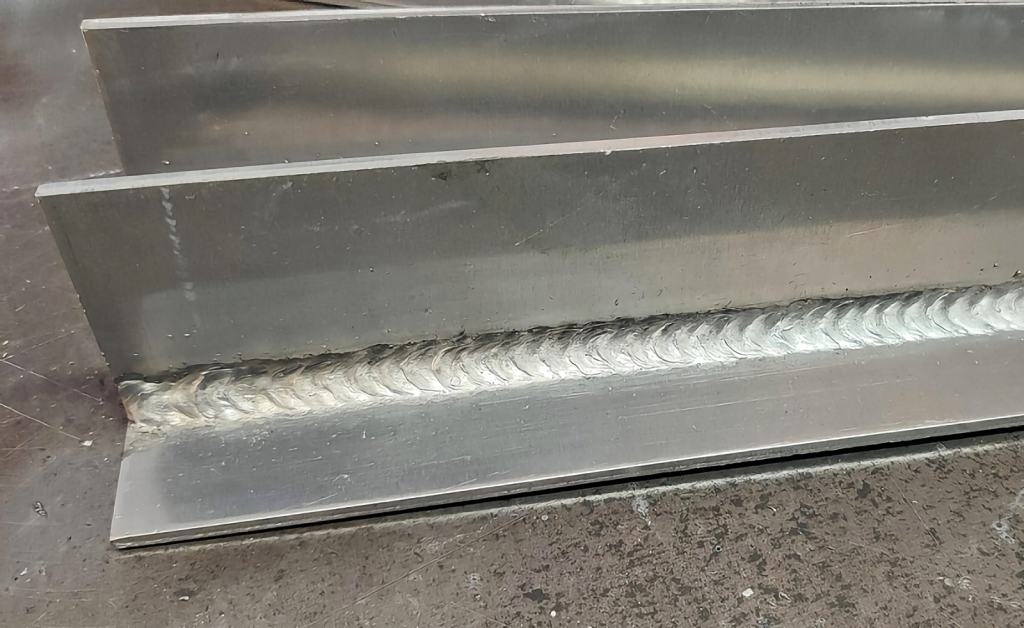
© weldguru.com – Image usage rights
Auto shops use GMAW-P to repair frames and panels made from exotic alloys. High-strength and ultra-high-strength steels can suffer severe loss of mechanical properties if overheated.
So, pulsed MIG is the best way to join these sensitive materials, thanks to its low heat input.
Some car brands mandate MIG brazing instead of welding for auto body repair. Brazing doesn’t melt the base metal. So, you won’t induce heat damage and burn off the zinc or galvanic coatings on corrosion-prone car parts.
You can braze with many standard MIG welders. But pulsed MIG makes it easier to avoid melting the metal or bringing it to a critical temperature.
Consider the pulsed MIG welding process if you own a car shop or are into DIY car body jobs. The GMAW-P is also used extensively for welding aluminum in all industries with an almost TIG-like joint quality.
Main Advantages of Pulse MIG Welding
The main advantages of using pulse MIG welding include:
- Spatter-free welds – Significantly reduce your post-weld clean-up time and prevent sensitive alloys from getting “burned” spots.
- Lowered heat input – Welding thin gauge stainless steel and aluminum is far easier because each pulse’s low (background) current helps prevent burn-through, warping, and corrosion resistance loss of heat-sensitive materials like austenitic stainless steels.
- Achieves near TIG-like weld aesthetics – You can “stack dimes” and create TIG-like finish quality using double-pulsed MIG welding, sometimes called pulse-on-pulse. As a result, you can take on jobs where visual weld appearance is paramount, like welding sports cars or motorbike exhaust pipes, hand railings, and interior details.
- Higher deposition rate – Improves welding speed and efficiency when filling large grooves (i.e., running hot passes on thick pipe V-groove joints).
- Healthier shop environment – Dramatic reduction of the welding fumes compared to standard MIG. CDC and NIOSH suggest that pulsed MIG reduces the welding fume generation by reducing the amount of vaporized welding wire, which may contribute to lowered chances of lung cancer among welders.
- Allows out-of-position welding – Unlike standard spray transfer MIG, the pulsed MIG can keep the weld puddle sluggish enough for overhead welding. You can use this to your advantage in HVAC, pipefitting, construction, and similar jobs where you need to join metal above you.
- Tight weld pool control – The improved sluggishness of the weld puddle can help you bridge root gaps, making pulsed MIG ideal for the root weld pass when welding pipe. The root pass is often made using TIG welding because you can manually control the puddle. But pulsed MIG is far faster and easier, making the root welding process a breeze. That’s why specialized welders for pipe welding shops include the pulsed MIG welding process.
- Improved arc starts – The high amperage of the pulse helps to get the puddle going, but the low background current prevents burn-through on thin stock. Inexperienced welders often burn through the thin materials right at the beginning of the weld. GMAW-P can help you avoid burn-through, even if you don’t move quickly upon starting the arc.
- Excellent directional control and adaptive arc function – Many pulsed MIG machines can adapt the arc as you weld. So, suppose you have hand tremors or little experience with guiding the torch along the joint. In that case, the arc can help alleviate the inefficiencies of movement and improve the weld consistency, as noted by Erik Brown in his piece on GMAW-P in the AWS Journal, 2017 February edition.
Are There Any Disadvantages To Pulse MIG?
- “Non-synergic” GMAW-P welders – “Non-synergic” pulsed MIG welders can be challenging because they lack automatic adjustments. However, “synergic” pulsed MIG machines modify all variables for you when you adjust the wire feeding speed (“WFS”), making pulsed MIG far easier to handle.
- Pulses lose effectiveness at long distances – GMAW-P may not perform to its maximum ability if you use welding cables longer than 50 ft. or coil them up. Coiling the cables creates additional inductance, which smoothes out the pulses, making them less effective.
- Costly investment – The pulsed MIG welders are more expensive than standard, constant voltage MIG machines. But the advantages are well worth it if you run a welding shop. However, if you are a hobbyist considering GMAW-P, it may not be worth your while. Luckily, some budget brands have introduced hobbyist-grade, inexpensive pulsed MIG welders to the market, which we’ll discuss later in the article.
- GMAW-P doesn’t remove surface oxides – Some people think the GMAW-P can break surface oxides, but that’s not true. The GMAW-P can only aid slightly in oxide removal, making pre-cleaning paramount when welding metals with surface oxides. This confusion stems from the fact that AC TIG breaks surface oxides on aluminum, magnesium, and similar metals. However, AC TIG alternates the current between DCEP and DCEN. Pulsed MIG only alternates the output power between high and low without changing the polarity.
- May reduce weld penetration – Double-pulsed MIG welding may sometimes provide insufficient penetration. It lowers the heat input more than single-pulsed MIG, which is undesirable when welding thick structural components.
What Is Double-Pulse MIG?
Double pulsed MIG welding, also known as pulse-on-pulse (“PoP”), works like standard GMAW-P but adds another pulse layer over the current output.
As a result, you’ll have even better control over the heat input and the finished weld aesthetics.
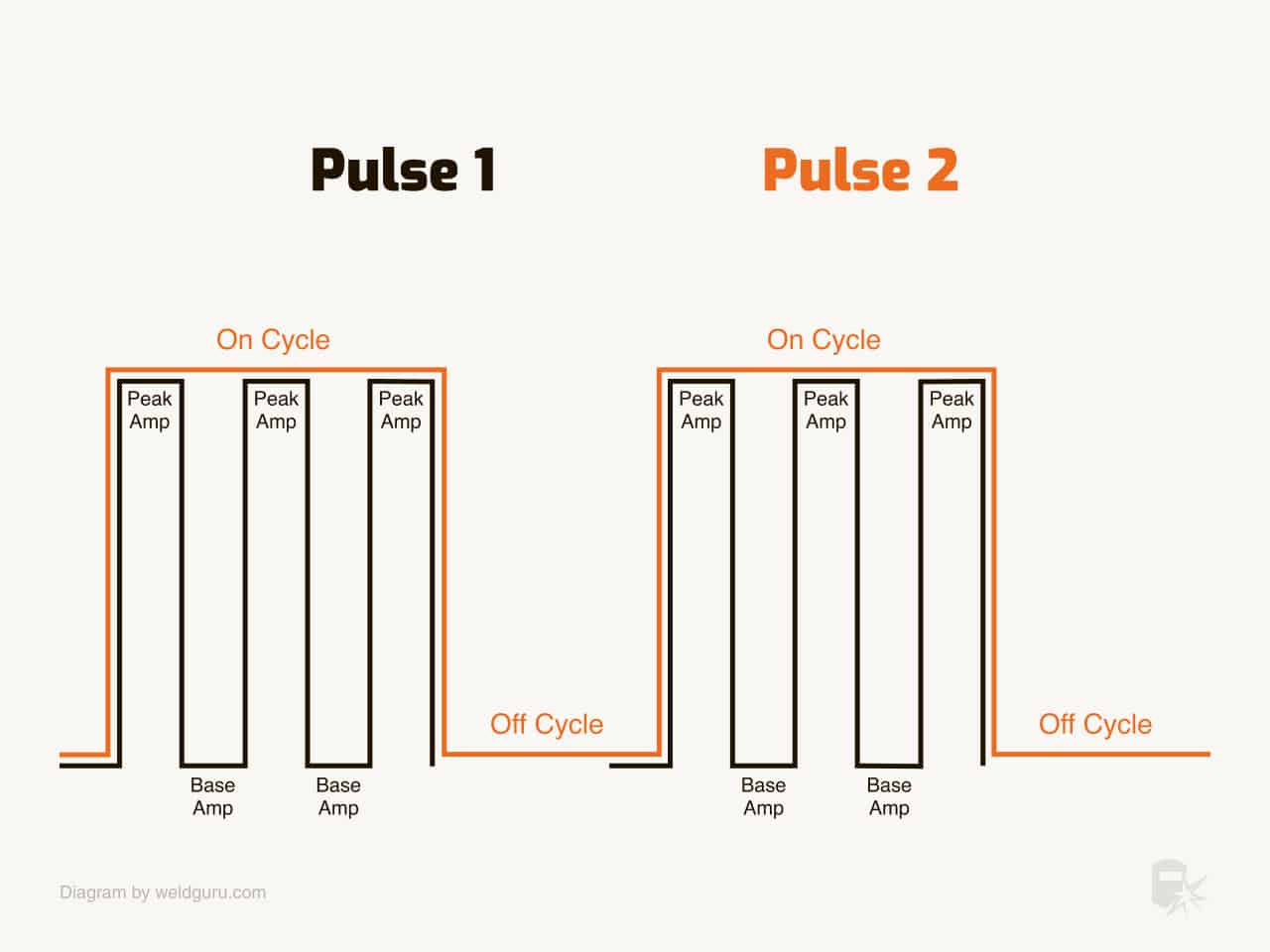
© weldguru.com – Image usage rights
Many people get double-pulsed MIG welding wrong, thinking that both pulses alternate the output current between high and low, which is not the case.
The two pulses of the double-pulsed MIG welding are:
- Pulse 1 – Your standard GMAW-P with peak and background current
- Pulse 2 – Significantly reduces the welding current, effectively cutting off the welding process without extinguishing the arc or losing the molten puddle. However, many GMAW-P welders allow you to modify the current input during the second pulse.
Single-pulse GMAW-P prevents burn-through and warping by reducing the mean heat input as it alternates between high and low currents.
Double-pulsed MIG uses the GMAW-P as its first pulse to stack a single bead.
The second pulse significantly reduces the welding current and cools the previous bead. As a result, the puddle freezes between pulse 1 and pulse 2, creating the TIG-like “stack of dimes” appearance as you move along the joint.
The first pulse lays the bead, while the second lets it cool, creating the TIG-like ripple weld appearance.
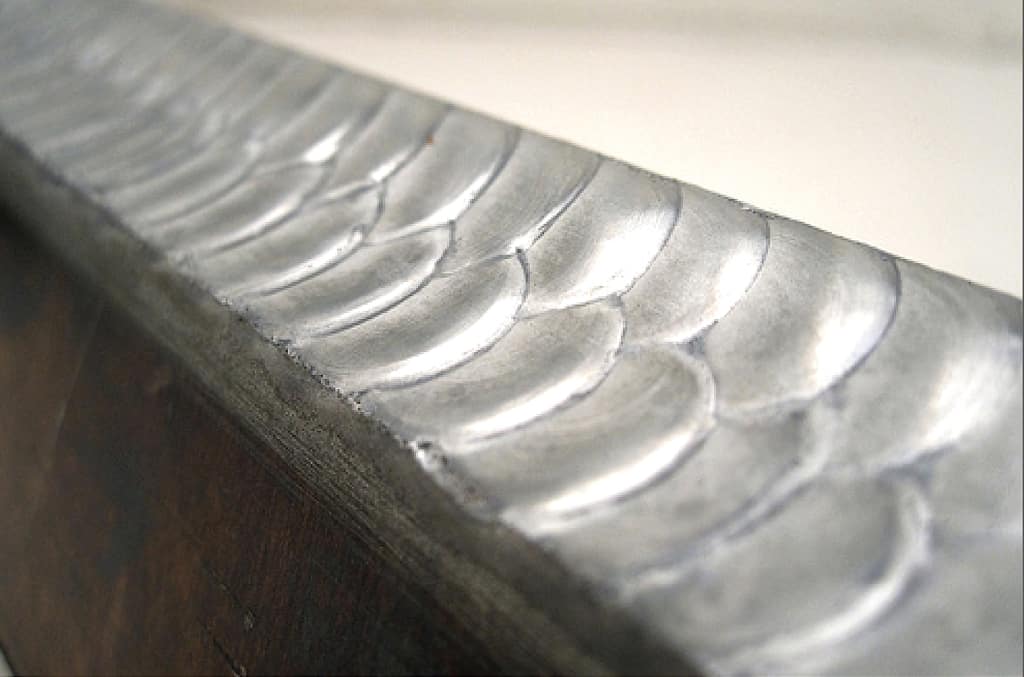
The number one advantage of double-pulsed MIG welding is the ability to produce appealing weld aesthetics with little effort and skill.
It may also help you join highly sensitive materials because the second pulse gives the weld and the heat-affected zone (“HAZ”) more time to cool before each consecutive bead.
While weld appearance doesn’t influence weld integrity, most welders and customers like to see those beautiful straw-colored stacked welds on stainless steel.
Your DIY projects or jobs you complete at the shop might look better if you use the double-pulsed MIG.
How Does Pulse MIG Welding Work?
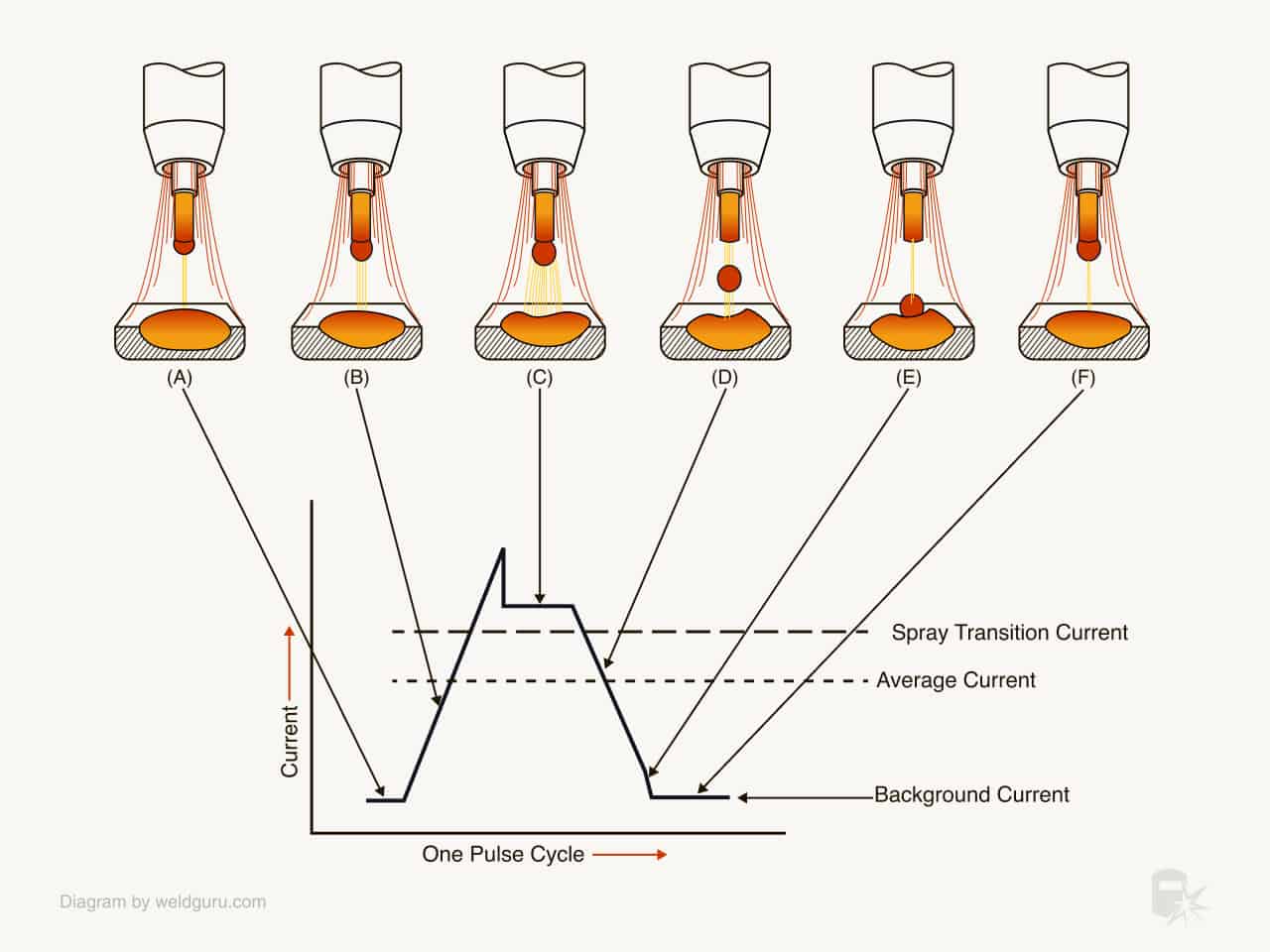
© weldguru.com – Image usage rights
Pulsed MIG welding has several stages. The peak current melts off the filler metal wire’s tip before the background current allows the puddle to cool slightly. But, many variables occur during this transition.
These stages must be appropriately adjusted for your shielding gas, filler wire diameter and type, and the welded material type.
That’s why synergic GMAW-P is the best way to go since any mishap in manual pulsed MIG settings would result in poor results.
Synergic pulsed MIG machines automatically adjust the peak current, background current, pulse frequency, and pulse duration as you change the wire feeding speed.
So, you can adjust everything with one knob. However, not all machines are as simple to operate.
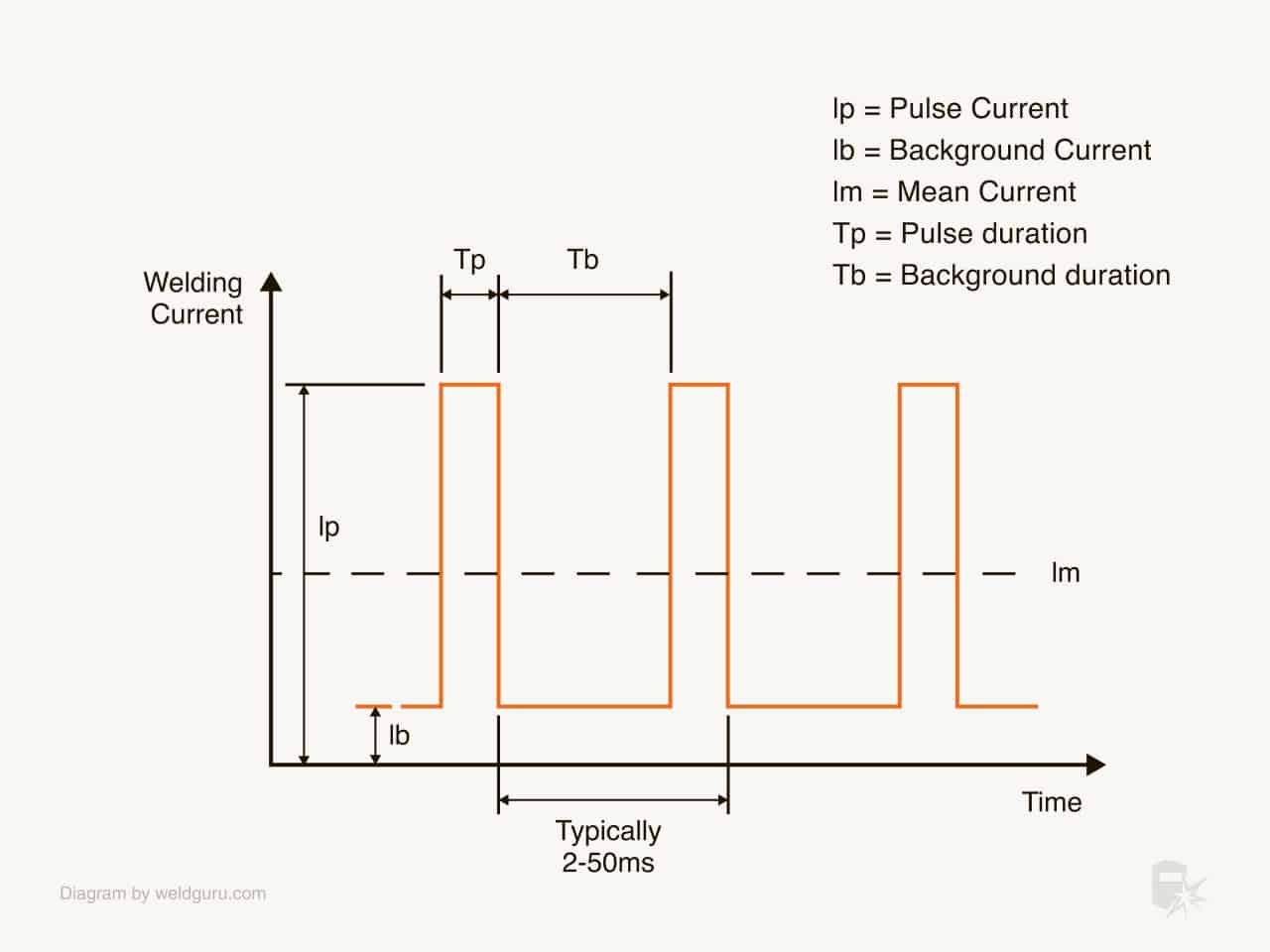
© weldguru.com – Image usage rights
Let’s explain each step of the GMAW-P:
- Pulse frequency – The number of pulses that occur in one second. It can range from a few pulses per second (“PPS”) to a few hundred PPS.
- Peak/Pulse/High current – The highest current output during the pulse peak. It must be higher than the spray transition current threshold to enter the spray transfer and prevent globular transfer.
- Peak current time – The length of peak current time. Long peak current time may send multiple droplets simultaneously, improving penetration and deposition rate. However, too long of a peak current time causes a wide and overly-liquid puddle, making it challenging to control in out-of-position welding.
- Background/Low current – The lowest current output during the pulse duration. The higher the current, the deeper the penetration. But, if the current is too high, you will only reap some of the GMAW-P benefits.
- Background duration – The length of background current time. The longer the background duration, the more the weld pool can chill and become sluggish.
- Mean/Average current – Average current input directly affects the average heat input into the material.
- Arc control/Trim – Adjust the distance from the wire tip to the weld pool. It allows you to fine-tune the arc for spatter reduction.
- Pulse balance – Used with double-pulsed MIG to adjust the length of the main pulse within each cycle.
Synergic GMAW-P welders auto-set these settings for you. Some brands also let you manually modify some or all of these settings.
But it’s best to stick to synergic settings until you get more experience with this welding process.
Metals You Can Weld With Pulse MIG
Pulsed MIG is best for joining stainless steel, aluminum, nickel alloys, and specialty steels like high-strength and high-carbon steels.
While you can pulse MIG weld mild steel, you would only benefit from GMAW-P when welding thin sections.
Pulse MIG Welding vs. Other Transfer Methods
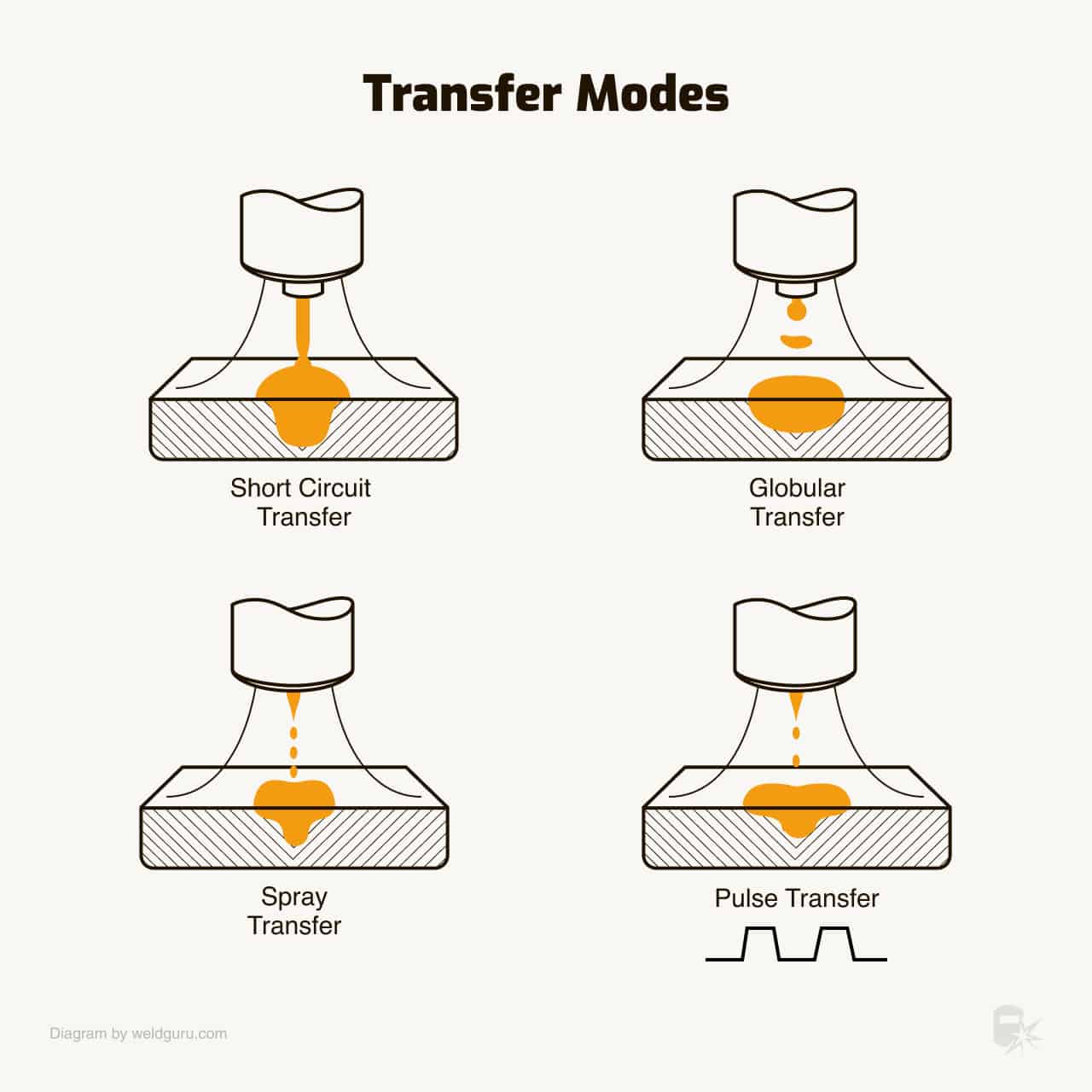
© weldguru.com – Image usage rights
The GMAW-P welding process offers many benefits compared to all three MIG transfer methods, so let’s examine each and explain how GMAW-P works differently.
Short Circuit Transfer vs. Pulse MIG
The short circuit is the most basic MIG transfer mode used by 99% of hobbyists and most small welding shops.
The filler wire is fed through the MIG gun into the weld puddle, where it short circuits (MIG gun > wire > ground clamp) and melts into the joint.
However, every time the short circuit occurs, the molten bit of wire explodes and propels the spatter outwards.
Unlike short circuit transfer, pulsed MIG sprays the molten wire into the joint. The wire never makes physical contact with the joint, so no spatter is generated.
Globular Transfer vs. Pulse MIG
Globular metal transfer requires a slightly higher current setup than the short circuit but is lower than spray transfer. Welders avoid using globular transfer because it provides uneven weld and excessive spatter.
Globular transfer works by melting the wire tip into a large molten ball and transferring it into the weld pool.
However, this ball of molten metal often explodes and propels extreme amounts of spatter when it short-circuits with the joint.
Pulsed MIG welding is significantly better than globular MIG transfer in every way. So there is no reason to opt for globular MIG transfer instead of GMAW-P.
Spray Transfer vs. Pulse MIG
You need to significantly elevate your WFS and voltage output to enter the spray transfer mode on your MIG machine.
Spray transfer provides a consistent stream of tiny droplets melting away from the wire tip into the weld pool without short-circuiting and spatter.
It works perfectly for welding thick sections and provides a good weld appearance.
However, spray transfer runs too hot for thin materials, and you can’t weld vertically or overhead with it because its weld puddle is too liquid.
The GMAW-P provides the spray transfer mode during the peak current.
But it lowers the output during the background phase to prevent burn-through on thin material and allow out-of-position welding.
Is It Worth Buying A Pulse MIG Machine?
It is worth buying a pulsed MIG machine, especially if welding is your primary source of income. A GMAW-P welder could significantly improve your productivity and bottom line if you run a small shop.
Hobbyists can also benefit from GMAW-P by achieving better-looking welds and avoiding burning thin materials.
If you frequently join pipes in your shop, repair auto body parts, or weld thin stainless steel and aluminum, the GMAW-P is worth it.
But if you only weld occasionally, getting costly pulsed MIG equipment may be a waste of money.
However, if you spend significant time working on DIY projects, GMAW-P may improve your productivity and finished weld quality.
How Much Does a Pulse MIG Welder Cost?
Pulsed MIG welders usually cost several thousands of dollars. But there are outliers beyond this article’s scope, like the inexpensive YesWelder YWM-211P and highly expensive, industrial-grade GMAW-P welders.
Millermatic 255 – High-End Pulsed MIG Welder
The Millermatic 255 is a portable workhorse with a maximum output of 350A and a 60% duty cycle at 230A. It’s designed for professionals with an emphasis on ease of use.
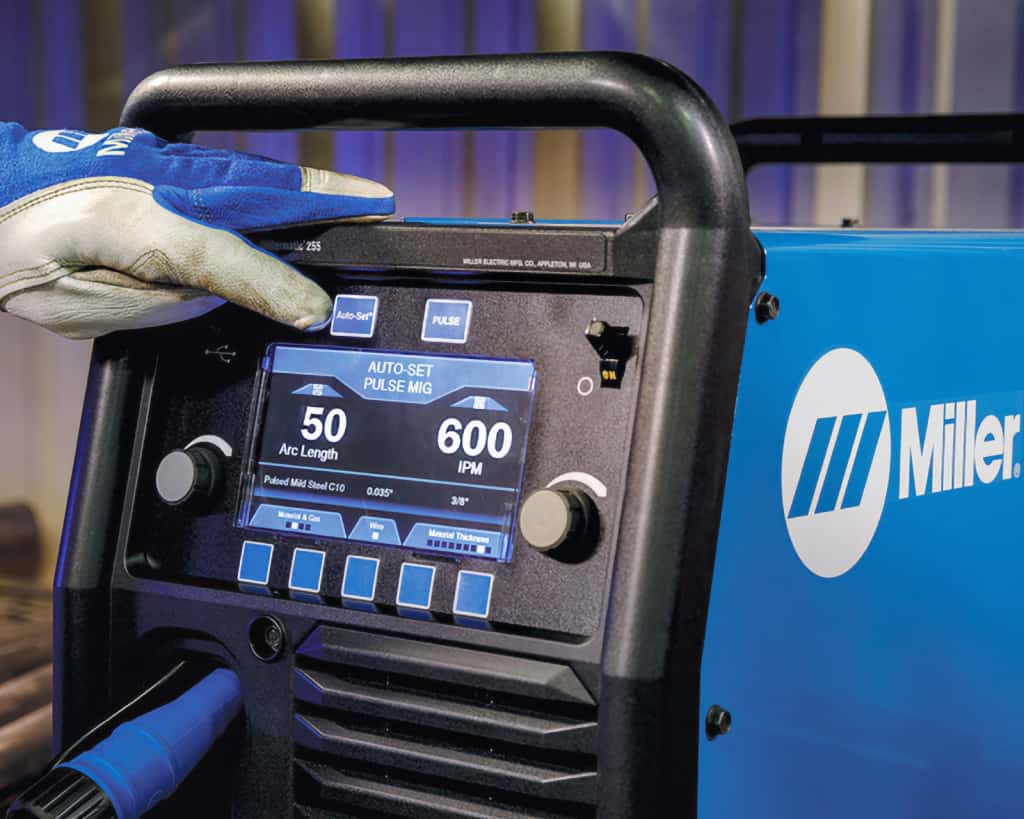
So, if you turn on the pulsed MIG mode, it auto-sets everything for you. You must select the welded material, joint thickness, and filler wire diameter.
It also allows you to fine-tune the settings manually so that you can adjust the parameters for nuanced specifics of any job. However, this is a single-pulse-only unit; it doesn’t include double-pulse MIG welding.
This machine provides up to 800 IPM WFS, which beats the Hobart Ironman 240 (no GMAW-P), the Lincoln Electric Power MIG 360MP, and the Miller’s Millermatic 252 (also no GMAW-P), making it a great choice for productivity when welding thick metal and filling large groove openings.
YesWelder YWM-211P – Value Pulsed MIG Welder
YesWelder likes to innovate and push the envelope in the hobbyist welding sphere. Still, seeing a pulse and double-pulse capable MIG welder for a fraction of big brands’ prices is surprising.
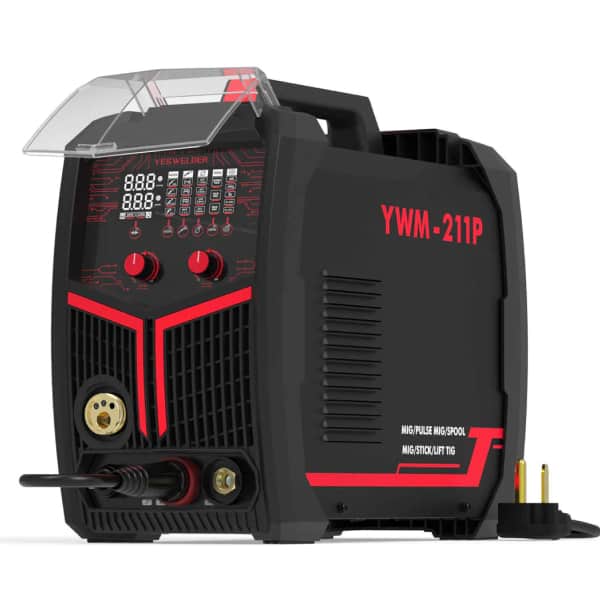
The YesWelder YWM-211P is a lightweight, multi-process welder with MIG, single pulse MIG, double pulse MIG, Lift TIG, and stick welding capabilities. It’s a dual voltage welder, unlike the Millermatic 255, so you can run it from the 110V and 220V outlets.
The YesWelder YWM-211P includes Synergic pulsed MIG settings, manual adjustments, and many settings to fine-tune the arc to your liking. It outputs up to 200A at a 60% duty cycle and weighs 41 lbs, making it an excellent choice for on-the-go jobs.
The YesWelder’s pulsed MIG works well, but you’ll unlikely reap all the benefits this technology offers with a hobbyist-grade welder. However, the YesWelder YWM-211P is an inexpensive way to dip your toes into the GMAW-P and learn the process.
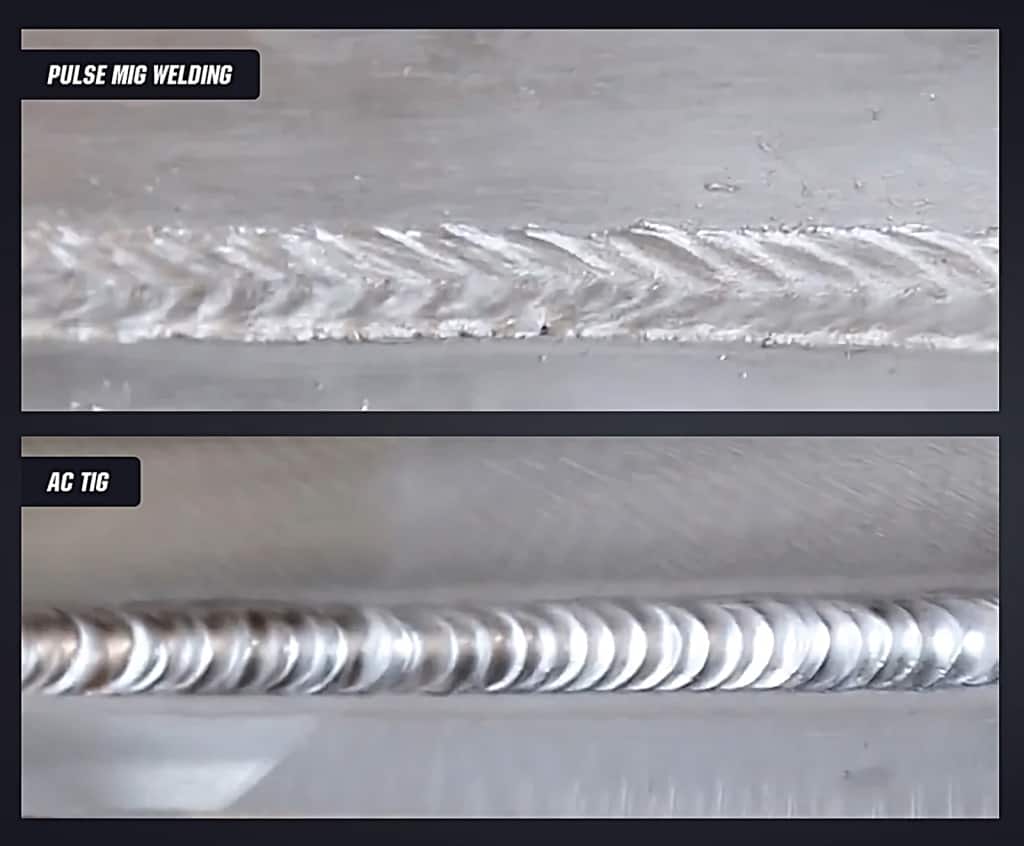
Credit: Yeswelder
Using its double-pulsed feature, you can make pretty good-looking “TIG-like” welds on the aluminum. But trained welders will spot the difference between the YesWelder’s “TIG welds” and real TIG welds.
Wrapping It Up
The GMAW-P welding process is not new, but it’s gaining traction as more brands implement innovative technologies to make this process as “synergic” as possible.
The pulsed MIG was too challenging to use when it was introduced in the 1960s. But, nowadays, it’s almost “plug and play,”, especially with professional welders like the Millermatic 255.
We still haven’t seen wide adoption of the pulsed MIG welding process except in the industries that mandate it, like vehicle collision repair. However, more and more welding shops are introducing the GMAW-P because it saves time and makes things easier.
Thankfully, the hobbyist and DIY space is also getting some exposure to the pulsed MIG process.
If you are a weekend warrior welder still on the fence about the GMAW-P, investing in the YesWelder’s YWM-211 may be worthwhile since it also includes the regular GMAW.
- Welding: Principles and Applications, 8th ed. By Larry Jeffus
- American Welding Society Welding Handbook, Volume 2 – Welding Processes, Part 1
- CDC – Pulsed Power Welding to Reduce Welding Fumes
- The Welder Digital Newsletter – November/December 2022
- The American Welder – Welding Journal – February 2017
- Everlast Power i-MIG 253DPI – Operator’s Manual
- Yeswelder YWM-211P – Operator’s Manual
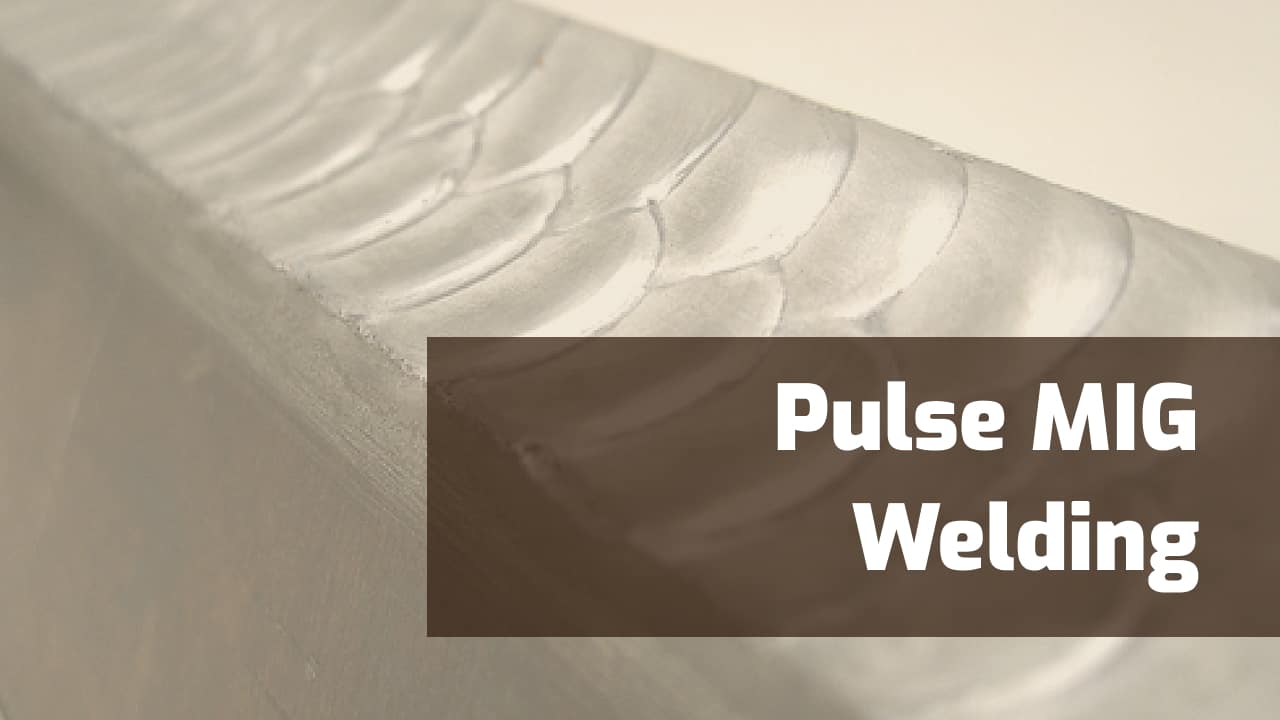
Thanks for the detailed article, I’m a new CWI and I’m looking for all the info I can get.